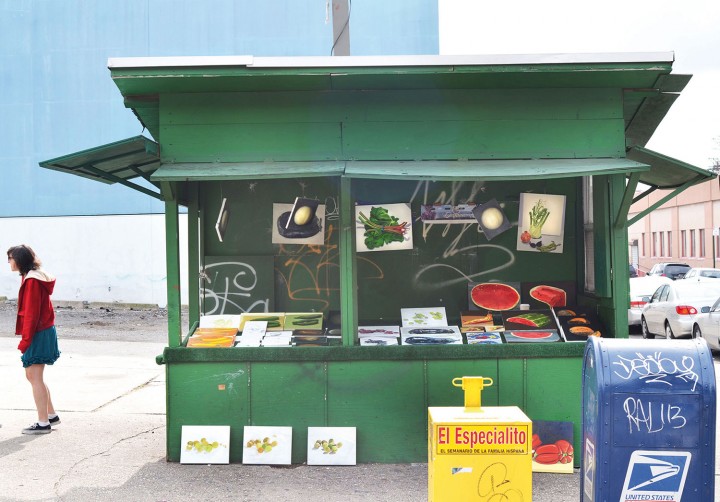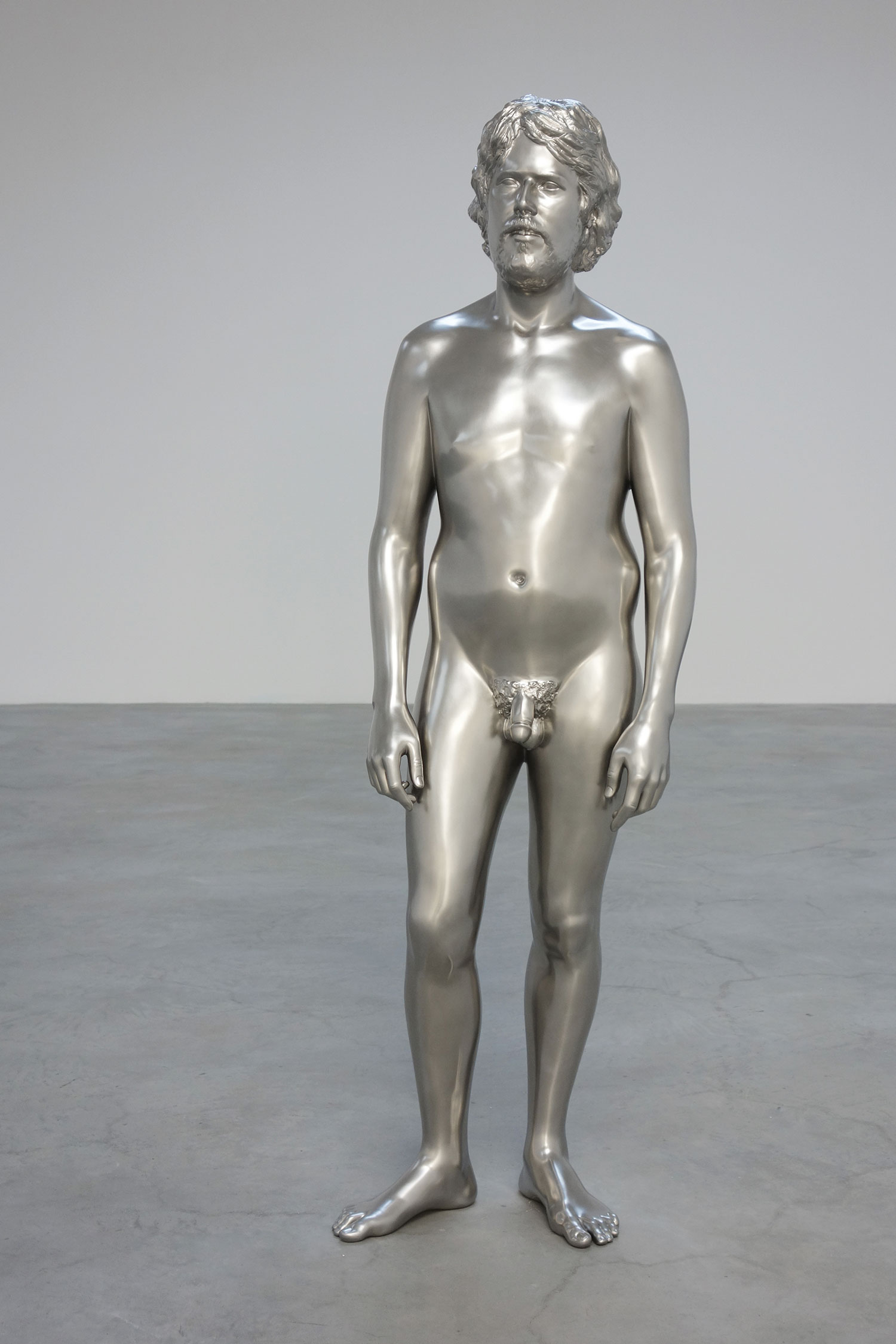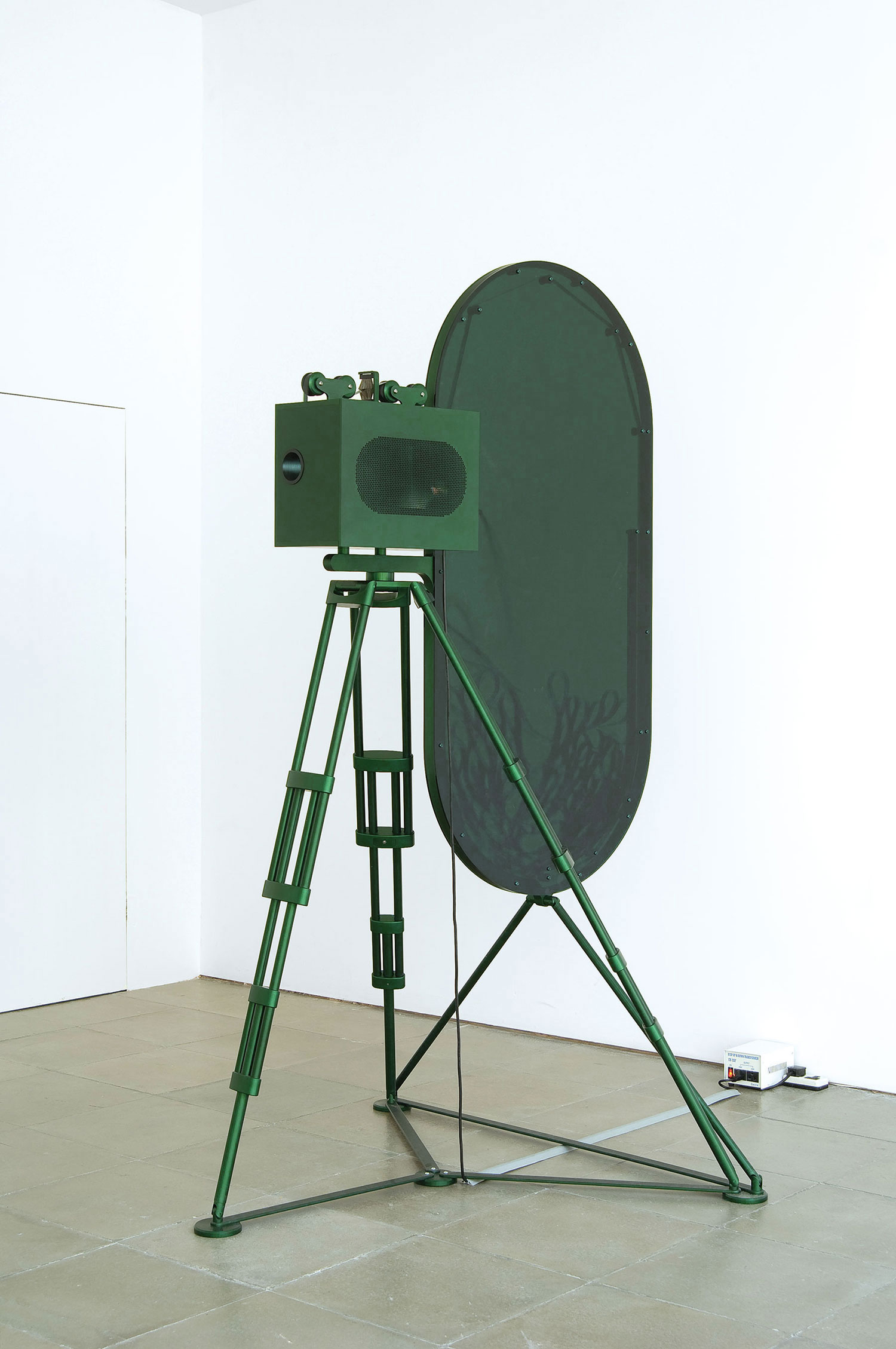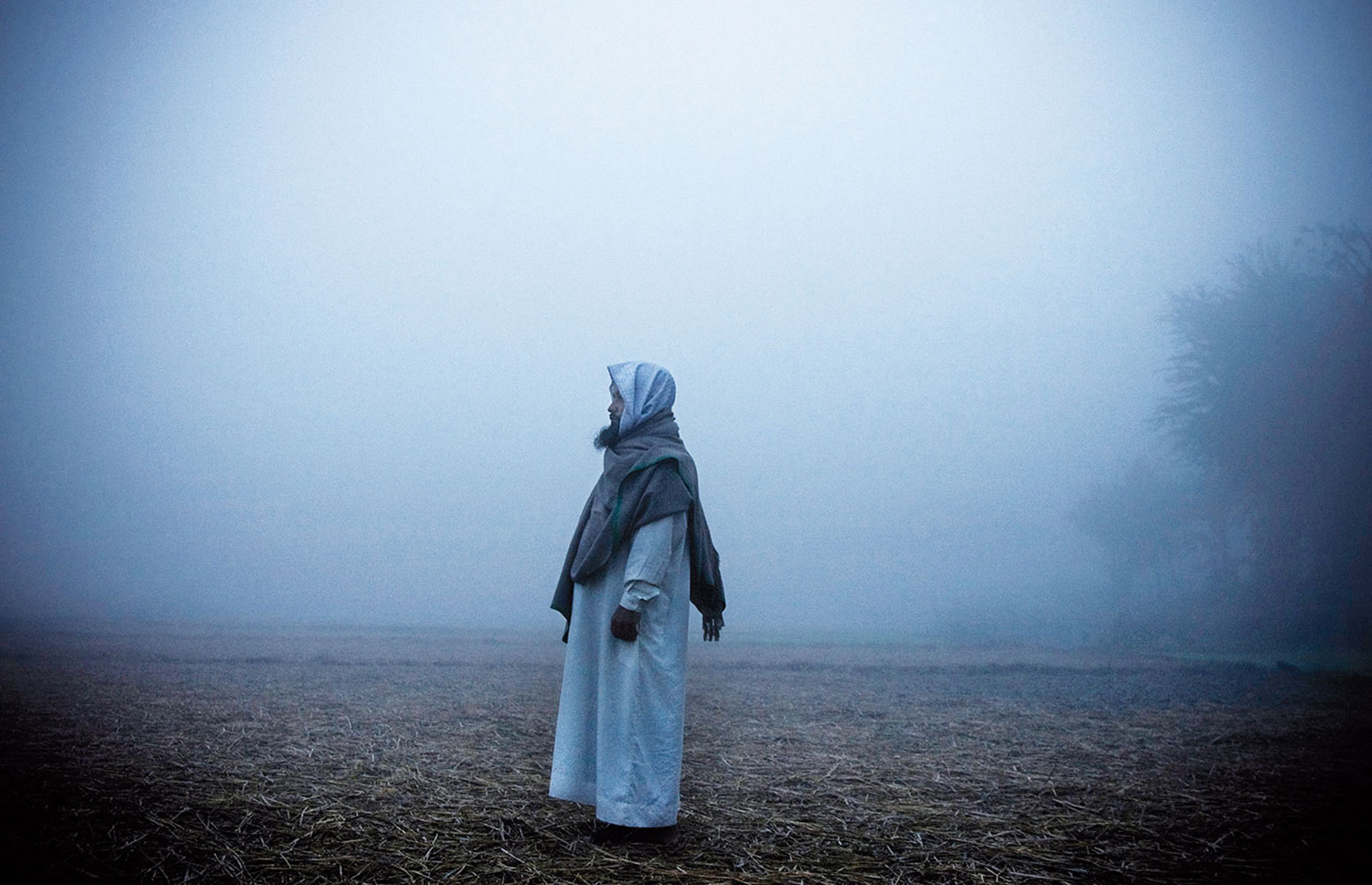
Many contemporary painters work in a conceptualist vein, building a practice around modular motifs. Paul Branca is no exception. But rather than simply recycling mid-20th-century ideas like geometric abstraction or the monochrome, Branca’s conceptual labor playfully reconsiders the “ready-made” categories of genre painting and still life. In a sense, these two traditions represent historical poles of exteriority and interiority: while genre painting described the outside world, still life painting was a hermetic compositional exercise restricted to the studio. Branca’s works initiate a dialogue between these pictorial traditions and the contemporary social sphere, investigating the circulation of objects as signs, and in turn, how signs circulate as objects.
Like genre painting, Branca’s visual lexicon often includes the signifiers of urban existence — tote bags, peep holes, umbrellas, fruit, his phone number, and the language of the New York City subway system. Although the artist invests each quotidian item with its own personal symbolism, taken as a whole, they suggest modern comforts and protection. He renders these elements with compositional techniques that demonstrate his fluency with the history of modernism, from gestural flourishes and photorealism to a rich understanding of color theory. For his solo exhibition “Waitings” (2011) at Scaramouche Gallery, he subjected the advertisements and signage of his daily commute to painterly permutations and dramatic scale shifts.
These pictures, however, do not remain mute objects. Branca’s works often disrupt into the legibility of social sign-systems, whether he is dispersing a body of work or indicating the permeability between art’s institutional structures and the world around them. His projects suggest a productive tension for painting at the margins of everyday life.
Take, for example, his exhibition “Couch Crash” at the Berlin gallery Golden Parachutes (2010). The show consisted primarily of tape paintings that spelled out each word of the German phrase, “Hey guys, could I crash over your couch? I am really tired and can not go on,” like vocabulary flash cards. After giving most of the panels away to friends at the show’s opening, the exhibition contained little more than three geometric paintings composed from leftover paint. The private gesture of conviviality yielded little for market consumption. In two recent projects, however, Branca commissioned works from fellow artists for highly public contexts. 20% Chance of Show (2012)assembled umbrellas painted by six artists for an exhibition in the lobby of MoMA; for Fruit and Vegetable Stand (also 2012) Branca and his friends occupied a vacant produce stall in Queens, New York, to sell their paintings of edible wares.
Aside from these collaborative experiments, Branca remains invested in the private act of painting as a historical trope and social construction. In his exhibition “l’origine de l’espace privé &&&” (2012), Branca paired his vocabulary of colorful hourglasses and fruit with symbols culled from the marginalia of Édouard Manet’s letters and cartoonist Cham’s (Charles Amédée de Noé) satire on private life. Beside these paintings, Branca placed a collage made from cardboard shipping containers plastered with international transportation security stickers. In one gesture, Branca underscored the inseparability of painting from life, no matter how “marginal” the content.





